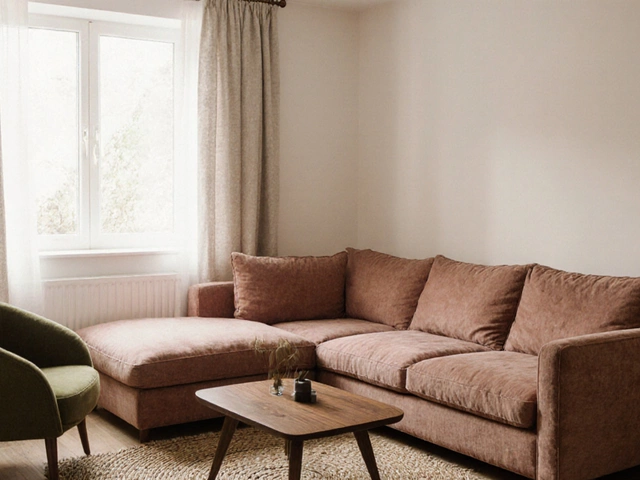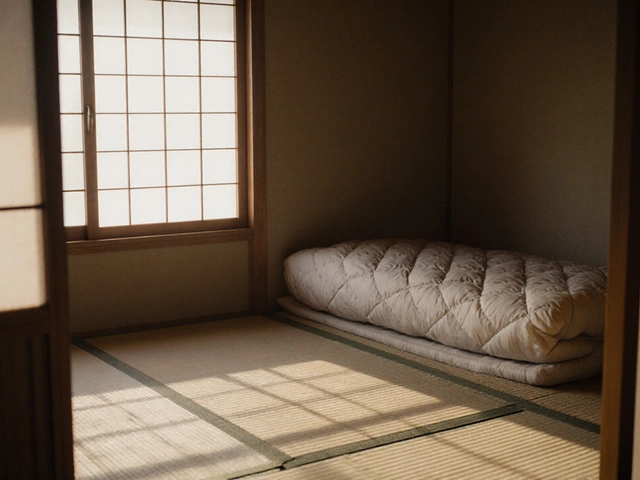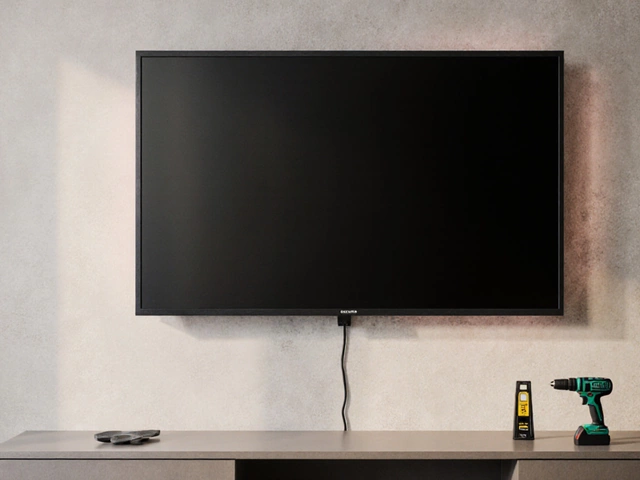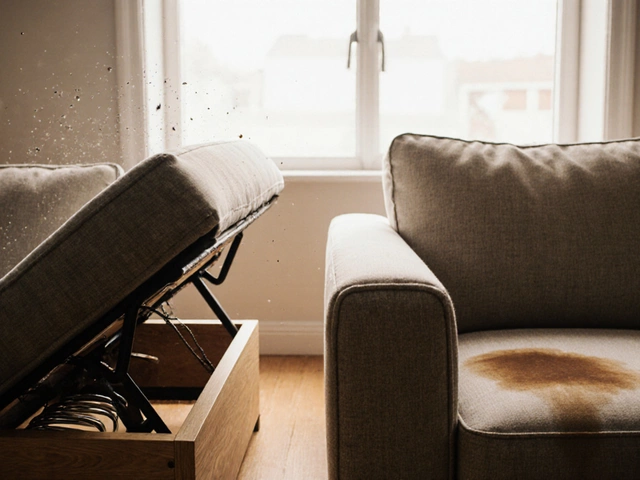Sofa beds look like a genius solution for small spaces—need a couch, get a bed thrown in for free, right? Not always. After a few nights sleeping on one, you might be questioning your life choices. The mattress is usually much thinner than what you’re used to, and metal bars or awkward seams can mess up your sleep more than you expect.
If you’ve ever had friends crash at your place, you’ve probably heard the complaints: too hard, too lumpy, or just plain uncomfortable. There’s a reason even fancy hotels avoid putting sofa beds in their best rooms. Most models try to balance being a decent seat and a usable bed, but usually end up doing both jobs just okay, not great.
- Comfort Compromises
- Space and Setup Hassles
- Durability and Lifespan
- Weight and Portability
- Maintenance and Care
Comfort Compromises
Let’s be real: sofa beds almost never match the comfort you get from a real bed or a dedicated couch. The mattress is usually thinner just to fit inside the folded frame, which means less support for your back or hips. You might notice stiff metal bars right under where you need the most padding, especially in cheaper models. And if you’re a side sleeper, good luck—you’ll probably wake up feeling the springs or frame lines by morning.
The thing is, makers have to pick between a mattress that’s thick enough for comfort and thin enough to fold neatly. Most land somewhere in the middle, which can mean too hard for sleeping and too soft or saggy for sitting. According to customer reviews from big-box stores like IKEA and Wayfair, about 40% of complaints about sofa beds focus on mattress discomfort—people often swap them for air mattresses or foam toppers after a night or two.
| Mattress Thickness | User Rating (1-5) | Reported Sleep Quality |
|---|---|---|
| 2-3 inches | 2.2 | Poor (Back pain common) |
| 4-5 inches | 3.1 | Fair (Still issues for side sleepers) |
| 6+ inches* | 4.0 | Good (Expensive, rare in entry-level models) |
* Softer, thicker mattresses are mostly found in high-end, pricey sofa bed models. If you go cheap, expect to feel some discomfort.
Some brands try to fix this by using memory foam, but it can still feel flimsy because of the fold. Add in the upholstery seams and the gap between sections, and you’re forced to sleep across bumps or uneven surfaces. If you’re planning on regular overnight guests, or using the bed yourself, a sofa bed probably isn’t your best bet for consistent, restful sleep without extra padding or fixes.
- If comfort matters, test the mattress in-store before buying—don’t trust the pictures.
- Add a foam topper for temporary improvement, but remember it can be a pain to store or fit.
- Read reviews about both seating and sleeping comfort—performance varies a lot between brands.
Space and Setup Hassles
On paper, sofa beds seem like a real space saver. But in real life, they can totally hijack your living room layout. You usually need way more room around a sofa bed than a regular couch, just so you can open it up without crashing into your coffee table or wall. If your place is tight, you’ll find yourself shuffling furniture every time you want to use the bed part.
And let's talk about setup—it’s rarely as simple as yanking a handle and watching the mattress pop out in style. Some designs need both hands, a bit of muscle, and plenty of patience. If you’ve got stuff stored underneath or nearby, you'll have to move it out of the way every single time. This setup dance gets even more annoying if you’re tired or in a rush.
- Pull-out models often require three feet or more of open space in front of the sofa—measure before you buy.
- L-shaped or corner sofa beds can block doors or pathways when open.
- Some styles have separate legs or supports you need to unfold by hand, which can get lost or jammed.
One study from a major furniture retailer in 2024 found that almost half of sofa bed returns happened because buyers didn’t have enough space to use both modes comfortably. So before you snap up that deal, grab a tape measure and really check your room’s layout. Don’t forget to account for side tables, TV stands, and even floor lamps—you’d be surprised what can get in the way.
| Sofa Bed Type | Space Needed to Open (inches) |
|---|---|
| Traditional Pull-Out | 72–90 |
| Futon Style | 45–60 |
| L-Shaped/Sectional | 80–100 |
It’s easy to underestimate these space saving furniture pieces. But if setting it up starts feeling like a daily workout, you might wonder if the hassle is worth it.
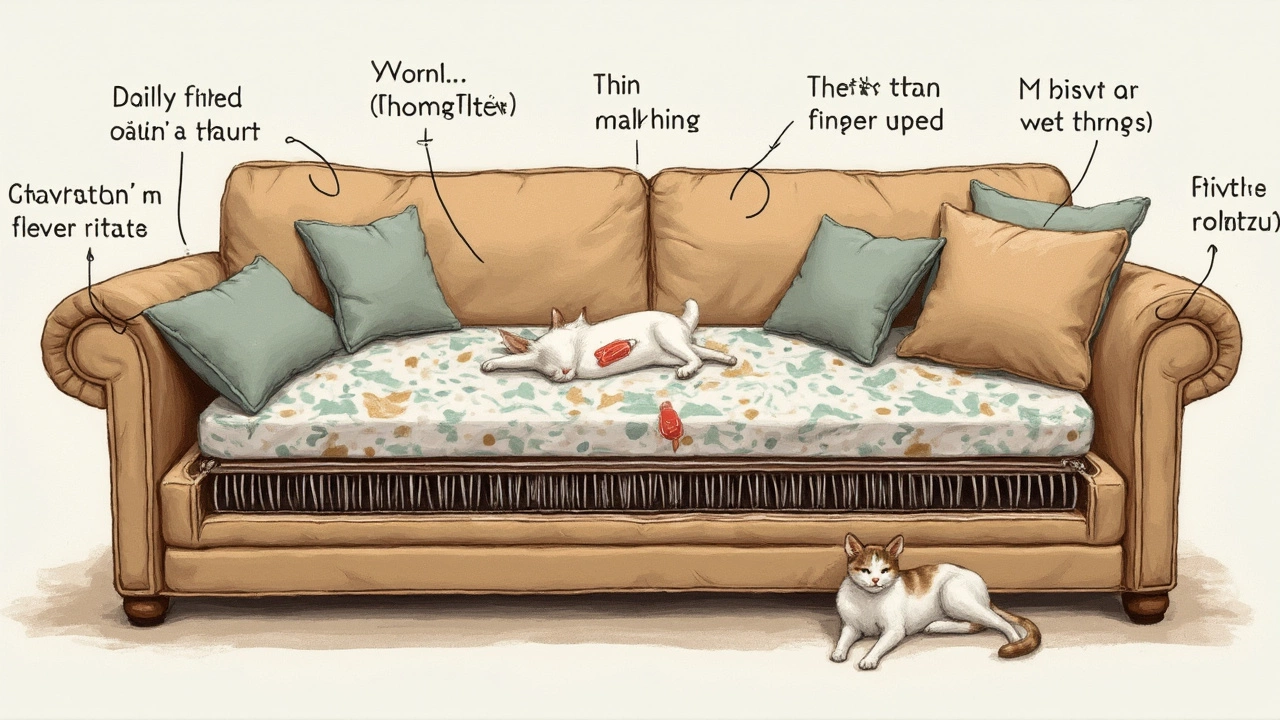
Durability and Lifespan
Let’s talk about how long a sofa bed can realistically last. Even if you take good care of it, it’s usually not going to outlast a regular sofa or a proper bed. The main problem is all those moving parts—the hinges, the fold-out frame, and the jointed mechanisms. Each time you open and close the bed, you’re putting the whole thing under strain. It’s not uncommon for the frame to start squeaking or the mechanism to jam after a few years, especially with budget models.
The average sofa bed can last anywhere from 5 to 10 years, but that depends on how often you use it. If you’re folding it out every night, expect closer to five. One 2023 survey found that heavy daily use cut the expected life of a typical sofa bed down to less than five years before comfort and function dropped off sharply. For comparison, a standard couch can often hang in there for over a decade.
The mattress itself isn’t built for the long haul either. Even higher-quality sofa beds usually have thinner or lower-density foam, which can lose shape fast. After a few cycles of guests sleeping over, you might notice permanent lumps or even feel the bar poking through. Some brands offer replacement mattresses, but that’s another cost most people don’t think about up front.
| Type | Expected Lifespan (Years) | Common Issues |
|---|---|---|
| Sofa Bed | 5 - 10 | Sagging, mechanism failures, squeaks |
| Regular Sofa | 10 - 15 | Sagging, fabric wear |
| Bed Frame + Mattress | 8 - 12 | Mattress sag, creaky slats |
If you’re determined to make your sofa bed last, stick to models with metal frames instead of wood, and check user reviews for comments about the build quality. Some handy folks even tighten bolts or oil the hinges now and then. Just know that no matter how careful you are, sofa beds simply aren’t built for the long haul like a dedicated piece of furniture.
Weight and Portability
Dragging a sofa bed across a room is never fun. These things weigh a lot, mostly because you're not just dealing with a regular couch—you’re also hauling around a full metal frame, mattress parts, and sometimes even extra padding tucked into the base. Even the lighter models can weigh 100 pounds or more, while bigger, sturdier versions hit 180 pounds easily. That’s way heavier than your average two-seater sofa.
Moving a sofa bed up stairs or through tight corners isn’t just a workout; it can leave scrapes on your walls or even damage floors. Most sofa beds don’t have handy wheels, and their bulk makes them awkward for solo movers. If you like rearranging your furniture every so often or you’re the type to move apartments every year, a standard sofa bed is pretty much the opposite of convenient.
Here’s a quick comparison to show where sofa beds sit on the weight scale:
| Furniture Type | Average Weight |
|---|---|
| Standard Sofa | 80–120 lbs |
| Sofa Bed | 120–180 lbs |
| Loveseat | 50–70 lbs |
| Futon | 60–90 lbs |
Honestly, portability just isn’t a strength of sofa beds. If you plan on shifting stuff around a lot, look into sofa beds with lighter metal frames or compact designs. But if you pick the classic heavy version, don’t forget to squad up your friends before any big move.

Maintenance and Care
Here’s something most people don’t think about: keeping a sofa bed in shape takes more work than a regular couch. Between spills, crumbs, and dust, cleaning can be a pain. If you’ve got the classic metal frame, dust and debris get stuck in corners that you can’t reach without a flashlight and lots of patience.
The fabric gets a double workout—by day it’s for lounging, by night it’s exposed as the bed. Over time, you’ll notice stains, sagging, or even mysterious odors if you’re not on top of a cleaning routine. Most sofa beds aren’t built with removable covers, so deep cleaning means either scrubbing awkward corners by hand or paying a professional, which gets pricey fast.
The mattress needs attention too. It’s thinner than regular mattresses and can pick up sweat, dust mites, and allergens more quickly since it’s often folded and stored. Vacuuming it out every month and using a mattress protector extends its life—don’t skip that step if you care about comfort and hygiene.
- Spot clean spills right away to avoid lasting stains.
- Vacuum both the fabric and mattress regularly to fight dust and allergens.
- Rotate or flip the mattress (if possible) every couple of months for even wear.
- Tighten up any loose frame bolts—sofa beds creak more easily with use.
- Don’t forget under the couch; lost items and crumbs love hiding there.
One handy tip: buy a fitted sheet for the mattress even if guests only stay occasionally. It’s way easier to wash a sheet than to scrub the mattress.
| Maintenance Task | Recommended Frequency |
|---|---|
| Vacuuming Mattress | Monthly |
| Washing Covers (if removable) | Every 2-3 months |
| Spot Cleaning | As needed |
| Frame Check/Tighten | Twice a year |
If caring for your sofa bed sounds like a lot, you’re not wrong. But putting in the work pays off—your guests will thank you, and you won’t have to replace a pricey piece after just a few years.




